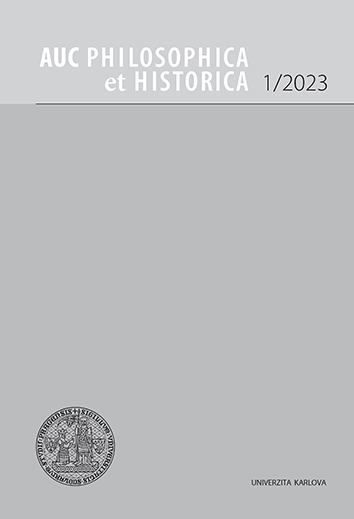AUC Philosophica et Historica (Acta Universitatis Carolinae Philosophica et Historica) is a multidisciplinary academic journal focused on the humanities with more than 50 years of tradition.
The journal is indexed in CEEOL, DOAJ, and EBSCO.
AUC PHILOSOPHICA ET HISTORICA, Vol 2021 No 2 (2021), 77–82
Komplex nadřazenosti. „Naše“ versus „cizí“ v českém užitém umění mezi světovými válkami
[Superiority Complex. “Ours” versus “Foreign” in Czech Applied Art between the World Wars]
Iva Knobloch
DOI: https://doi.org/10.14712/24647055.2024.10
published online: 01. 10. 2024
abstract
André Gide described Soviet attitudes towards the outside world in the 1930s as a manifestation of a superiority complex. And it seems to me that the proclamations of representatives of architecture, applied arts and professional art education in the Czech lands between 1918 and 1925, when they created a “national” or “state” style, do not differ much from these attitudes in many ways. In the texts of Pavel Janák, Otakar Novotný, Jaroslav Benda, V. V. Štech and others, the pronoun “our” occurs most often, which seems to have been generally accepted without further explanation; the opposite is “foreigners” who have nothing more to offer “us” – as the above-mentioned representatives of the Czechoslovak Werkbund, an organization that has set itself the goal of raising the level of housing culture and the environment of life in general, assure themselves. It manifestly promoted “domestic values and domestic spirit”, which are embodied in Slavic poetic, emotional, melodic works, suitable for the mood of “our people”, who were defined as a small, modest person, an ordinary descendant of farmers and village teachers. He is satisfied with the “provinciality”, the “obsolescence” of “our” art, because it reflects “our” conditions. Although the textual programmes of the representatives of the state, national style come to terms with the position of Czech applied art and architecture on the world stage in an immature way, the actual results of their artistic work no longer have to be evaluated from the modernist perspective as a dead end, but as distinctive manifestations of international modern decorativism, despite the isolationist ideas of the creators at the time.
keywords: National decorativism; National style; State style; Karel E. Ort; Czechoslovak Union of Arts and Crafts; Pavel Janák; Workers’ interior
references (5)
1. Bartlová Milena - Vybíral Jindřich (edd.), Budování státu. Reprezentace Československa v umění, architektuře a designu, Praha 2015.
2. Burckhardt Lucius, Le Werkbund Allemagne, Autriche, Suisse, Paris 1981.
3. Hnídková Vendula - Vybíral Jindřich, Národní styl, kultura a politika, Praha 2013.
4. Knobloch Iva, Svaz československého díla: první a druhá výstava, in: Odvaha a risk. Století designu v Uměleckoprůmyslovém museu v Praze, Iva Knobloch (ed.), Praha 2019, s. 23-33.
5. Knobloch Iva (ed.), Žijeme lidsky? Reforma bydlení 1914-1948. Svaz československého díla, Praha 2024.

Komplex nadřazenosti. „Naše“ versus „cizí“ v českém užitém umění mezi světovými válkami is licensed under a Creative Commons Attribution 4.0 International License.
